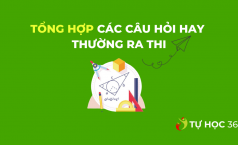(37) amount penalty toll number

Câu hỏi
Nhận biếtRead the following passage and mark the letter A, B, C, or D on your answer sheet to choose the word or phrase that best fits each of the numbered blanks from 36 to 45.
In a world where 2 billion people live in homes that don't have light bulbs, technology holds the key (36)______ banishing poverty. Even the simplest technologies can transform lives and save money. Vaccines, crops, computers and sources of solar energy can all reduce poverty in developing countries. For example, cheap oral-rehydration therapy developed in Bangladesh has dramatically cut the death (37)______ from childhood diarrhoea.But even when such technologies exist, the depressing fact is that we can’t make them (38)______ for those who most need them. Solar panels, batteries and light bulbs are still beyond the purse of many, but where they have been installed they change lives. A decent light in the evening gives children more time for homework and extends the productive day for adults.Kenya has a thriving solar industry and six years ago Kenyan pioneers also (39)______ connecting schools to the Internet via radio links. These people were fortunate (40)______ being able to afford solar panels, radios and old computers. How much bigger would the impact be if these things (41)______ and priced specifically for poor people?Multinationals must become part of the solution, because (42)______ they own around 60 per cent of the world's technology, they seldom make products for poor customers. Of 1,223 new drugs marketed worldwide from 1975 to 1996, for example, just 13 were for tropical diseases.People think those enterprises should do more to provide vital products such as medicines (43)______ different prices around the world to suit (44)______ people can afford. Alternatively, they could pay a percentage of their profit towards research and development for (45)______.
Adapted from “The Price is Wrong” in “Focus on IELTS Foundations” by Sue O’Connell, Pearson Longman, 2006
__________(37)
Đáp án đúng: C
Lời giải của Tự Học 365
Giải chi tiết:
the death toll = số người tử vong.
Luyện tập
Câu hỏi liên quan
-

___________(55)
-

_________(51)
-

Mark the letter A, B, C, or D on your answer sheet to indicate the correct answer to each of the questions.
There can be no doubt that recent statements______ the company's true financial position were misleading.

Mark the letter A, B, C, or D on your answer sheet to indicate the correct answer to each of the questions.
Please ensure that all outstanding debts are cleared within days of________ of this notification, otherwise legal action will follow.

______(53)

Mark the letter A, B, C, or D on your answer sheet to indicate the correct answer to each of the questions.
The company's art_______ will be sold at a special auction.

______(57)

